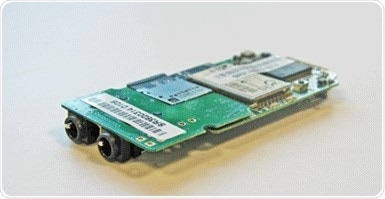The Shimmer PROTO3 Deluxe Unit is one of the most versatile products we have to offer. Its flexibility can be a great asset to anyone looking to prototype 3rd party sensors, or even develop custom sensing solutions; however, it is so versatile that you might have had trouble understanding just how it could possibly be used. In this piece, we will feature a little bit of the work done by Tom Blackadar, who is the founder of a consulting company called FitSense Technology and has been extremely active in the wearable/wireless healthcare marketplace for years.

Before diving into some of the work being done by Tom, it’s important that we establish a baseline understanding of what the PROTO3 allows you to do. At its most basic level, the PROTO3 allows you to integrate a non-Shimmer sensor with our standard Shimmer3 model. So, if you have an application where you need to cross reference data that you cannot acquire with a standard Shimmer sensor, you can now easily integrate it in with our platform. Let’s take a look at some of the work Tom is doing so you can get a better sense of what that actually means.
Tom has been working on an application to measure physiological responses to activity. One of the responses he’s looking at is the changes in a person’s oxygenation level when they exert themselves in a certain manner (e.g. running up stairs). Shimmer’s standard IMU unit allows Tom to acquire all the pertinent data related to activity; and accompanied by a third party SpO2 sensor, Tom has the necessary hardware to gather all the data for his application.
At this point, Tom is set on hardware, but the SpO2 and IMU sensors are on two different platforms. This leads to complications with analyzing the data because the data is not time correlated in any way. This is where the PROTO3 can be used as an intermediary that allows the data being collected from both of these sensors to be correlated on the Shimmer platform. In order to do this, you simply need to connect the SpO2 sensor to the PROTO3 via the 3.5mm jacks on the unit. The PROTO3 then connects to the standard Shimmer3 sensor via the internal expansion connectors. With this solution, Tom can now easily analyze both sets of data because they are time correlated within the Shimmer platform. Even though Shimmer doesn’t have a sensor specifically dedicated to SpO2, the PROTO3 allows this type of data to be integrated into its platform.
This is just one of many potential custom sensing applications that the Shimmer PROTO3 provides access to.